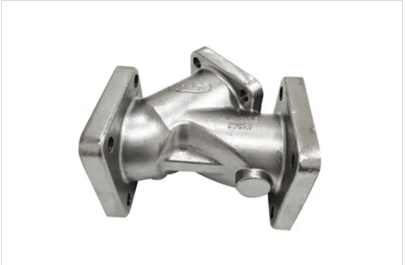Mobile:+86-311-808-126-83
Email:info@ydcastings.com
turbo exhaust housing
The Importance of Turbo Exhaust Housing in Performance Engines
Turbocharging has revolutionized the performance of internal combustion engines. By enabling engines to generate more power without significantly increasing their size, turbochargers have become a vital component in modern automotive design. At the heart of every turbocharger is the exhaust housing, a critical yet often overlooked component that plays a significant role in enhancing engine performance. This article explores the various functions and importance of turbo exhaust housing in performance engines.
Understanding Turbo Exhaust Housing
The turbo exhaust housing is the section of the turbocharger that captures exhaust gases from the engine and directs them into the turbine. As the exhaust gases flow through the housing, they spin the turbine blades, which in turn drives the compressor on the intake side of the turbocharger. This process compresses the incoming air, allowing for a denser charge that improves the engine's power output.
Key Functions of Turbo Exhaust Housing
1. Energy Conversion One of the primary functions of the turbo exhaust housing is to convert the energy from exhaust gases into mechanical energy that can be used to compress the intake air. The design and efficiency of the housing significantly affect how effectively this energy is converted.
2. Heat Management Exhaust gases are extremely hot, and the turbo exhaust housing must dissipate this heat effectively to prevent damage to the components. Proper heat management within the housing can enhance the lifespan of the turbocharger and associated engine parts. Some turbo designs also incorporate water or oil cooling features to manage temperatures more effectively.
3. Boost Control The exhaust housing plays a crucial role in controlling boost pressure. By adjusting the size and shape of the housing, manufacturers can influence how much exhaust gas is allowed to enter the turbine. This tuning is essential for optimizing performance, as it enables precise control over power delivery and throttle response.
4. Noise Reduction Another essential characteristic of the turbo exhaust housing is its ability to minimize noise generated by the exhaust gases. A well-designed housing can reduce the sound levels of exhaust gases exiting the system, leading to a more refined driving experience.
turbo exhaust housing

Design Considerations
The design of the turbo exhaust housing is critical for achieving optimal performance. Factors such as material choice, size, shape, and geometry can significantly influence the efficiency of the turbocharger. Most modern turbo housings are made from durable materials like cast iron or high-temperature alloys to withstand the brutal conditions of high-performance engines.
1. Size and Shape The size and shape of the exhaust housing determine how quickly and efficiently the exhaust gases can flow into the turbine. Smaller housings can improve response times but may restrict flow at higher RPMs, while larger housings enhance flow but may result in turbo lag.
2. Turbine Design The design of the turbine, including blade geometry and size, works in tandem with the exhaust housing to optimize performance. This synergy is crucial for achieving the desired boost levels and response times.
Performance Enhancements
Upgrading the turbo exhaust housing can yield significant performance gains. Many performance enthusiasts opt for aftermarket housings that provide improved airflow and durability. These high-performance housings are often designed with more advanced materials and construction techniques, allowing for better heat dissipation and increased resistance to wear.
Moreover, innovations such as variable geometry turbines (VGT) in the exhaust housing design can provide even greater control over boost levels across different RPM ranges. This technology optimizes performance in various driving conditions, enhancing the engine’s versatility and responsiveness.
Conclusion
The turbo exhaust housing is a pivotal element in the efficiency and performance of turbocharged engines. Its ability to manage exhaust flow, control boost levels, and handle the intensive heat generated during operation makes it an indispensable part of the turbocharging system. As automotive technology continues to evolve, the design and materials used in turbo exhaust housing will also advance, offering even greater performance improvements. Whether for everyday driving or competitive racing, understanding the importance of turbo exhaust housing can aid enthusiasts and engineers alike in achieving their desired performance outcomes.
-
Valve Body Acts as the “Heart” of Flow ControlNewsMay.19,2025
-
Understanding the Importance of ImpellersNewsMay.19,2025
-
Importance of Automobile Water PumpsNewsMay.19,2025
-
How an Engine Oil Pan Works to Keep Your Car LubricatedNewsMay.19,2025
-
Common Materials Used in Pump Impeller ManufacturingNewsMay.19,2025
-
Ball Valve Casting in Modern Pipeline SystemsNewsMay.19,2025











